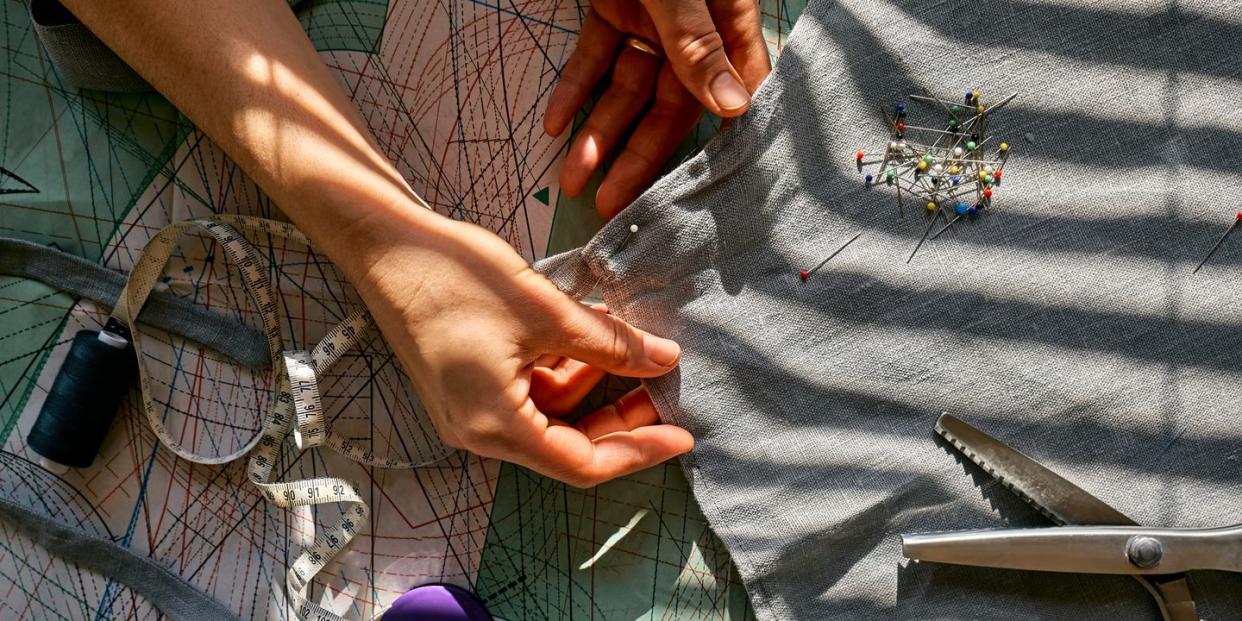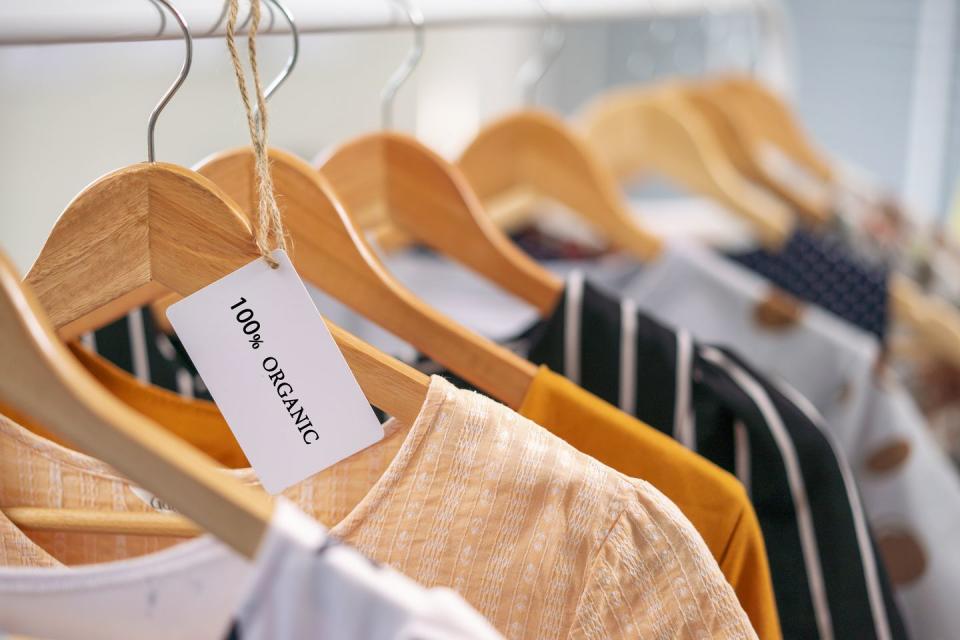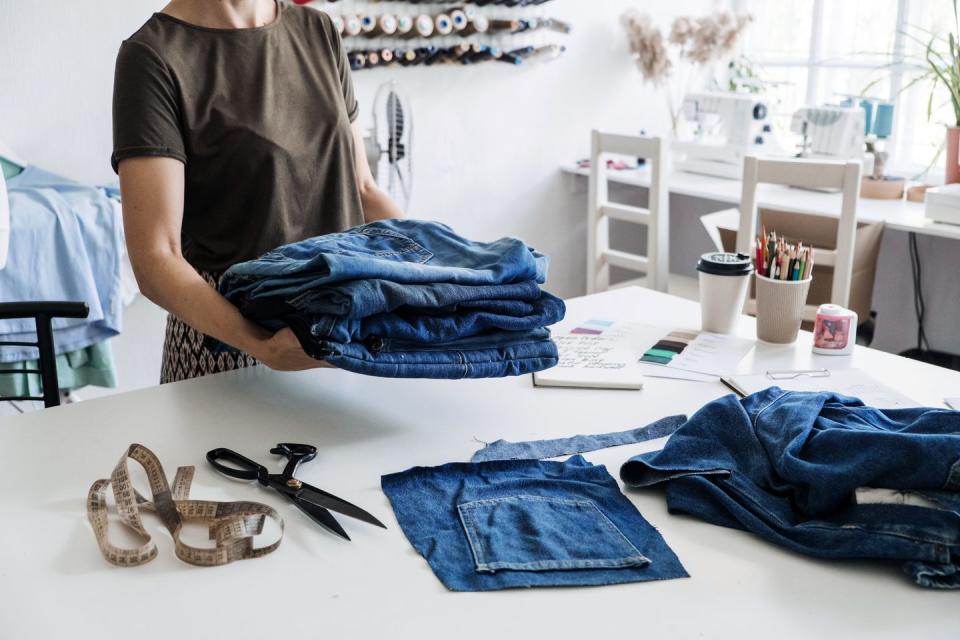Slow fashion explained: How to shop more mindfully

Living in a fast-paced world, shopping is just another thing we do at speed. We're all guilty of making impulsive purchases for our wardrobe, but it's a habit we can break. Introducing slow fashion...
More considerate of the environment and more economical, slow fashion is about being intentional and thoughtful in your clothing choices. Our no-nonsense guide to slow fashion has it all explained.
What is slow fashion?
In short, it's the opposite of fast fashion (the rapid production of trend-led clothes, often made cheaply). Slow fashion focuses on mindful consumption with an emphasis on opting for more sustainably made clothing options, plus repairing, re-wearing and recycling our clothes.
Instead of repeatedly buying clothes based on micro-trends, before discarding or replacing them, slow fashion encourages us to shop with intent, and where possible, to buy less and buy better. This could be through investing in a high-quality staple piece that'll last for years or opting for made-to-order pieces.
It's not a new term. In a 2007 article for The Ecologist, Kate Fletcher (sustainability pioneer, design activist, writer, nature enthusiast and research professor), summarised slow fashion as: "Designing, producing, consuming and living better. Slow fashion is not time-based but quality-based (which has some time components).
"Slow is not the opposite of fast – there is no dualism – but a different approach in which designers, buyers, retailers and consumers are more aware of the impacts of products on workers, communities and ecosystems."

What are the principles of slow fashion?
There's a general consensus on what slow fashion is, and Earth.Org describes it as:
Opting for quality over quantity (both in production and consumption).
More sustainable manufacturing processes.
A living wage and healthy working conditions for those making the clothes.
Selling clothes on a made-to-order basis to avoid waste. Alternatively, only creating collections in small batches.
A supply chain that uses locally sourced and produced garments.
A transparent supply chain and practices.
Using natural fibres, deadstock fabrics, or old textiles for upcycling.
What are the benefits of slow fashion?
To name a few: Reduced textile waste and pollution, higher-quality garments with longer lifespans, fewer clothes heading to landfill and less water waste.
Shopping for new clothes with slow fashion brands often helps to support small, independent and artisan businesses, too. Workers (and their skills) are better compensated and have better working conditions.
"Slow fashion, with the shift from quantity to quality, takes the pressure off time," explains Kate Fletcher. "It allows suppliers to plan orders, predict the numbers of workers needed and invest in the longer term."

How can I try slow fashion?
Shop with intention
Studies show that consumers don't wear 50% of the clothes they own. Our wardrobes are bursting with unloved pieces and poorly thought-out purchases. Shopping mindfully is the easiest (and cheapest) way of adopting a slow fashion mindset.
When buying new clothes, pause before purchasing. Ask yourself:
Will I like this in a years time?
How many times/occasions will I wear this?
Does this work alongside the rest of my wardrobe?
Does the quality suggest longevity?
How and where was it made?
Does the brand have good environmental and social values?
Take care of your clothes
That doesn't only mean washing your clothes on the correct heat setting. Try to repair your clothes as much as possible. YouTube is a brilliant resource for learning basic sewing skills. For more complicated alterations, visit a local tailor or seamstress.
You can also dye stained clothes, de-bobble old jumpers and fleeces and learn how to properly care for more tricky fabrics (such as wool and silk).
Buy second-hand clothing
A great place to start is online marketplaces like eBay, Vinted, Depop and Vestaire. Etsy is also a brilliant place to find unique vintage pieces. For occasions that require something showstopping, consider a dress rental service such as Hurr or By Rotation.
If you prefer to shop in person, don't neglect the humble charity shop – a goldmine of budget-friendly clothes. Car boot sales are also worth a rummage.
We also recommend hosting a clothes swap with friends as a great way to catch up while finding a new outfit or two.
Shop with small businesses
Small, artisan businesses offer unique, high-quality fashion that can't be found anywhere else. They also usually offer small collections (avoiding unnecessary waste) or can make their pieces on a made-to-order basis. This is particularly handy if you find that clothes offered by high street brands don't quite match up to your measurements.
Visiting brands in person (such as at our Country Living Fairs) is a brilliant way of starting your slow fashion journey, as it gives you the opportunity to find out more about their creative process and materials. Country Living Pavilions will be at five prestigious summer events in 2023, including the RHS flower shows and two of the UK’s most popular horse trials.
Withnell
From her home studio in Lancashire, Paula creates wonderful handmade garments for ladies and girls using a lovely range of natural fabrics, threads and trims. Her timeless designs are made with the intention of being cherished for years to come and use materials such as Irish linen to natural corozo buttons from Gloucestershire.
Not only are all of Paula's designs made to order, but she also welcomes custom orders, so you're guaranteed the perfect fit. Better still, every garment comes with a unique repair kit for any everyday wear and tear.
Holme & Moss
Run by mother and daughter duo, Kate and Anna, Home&Moss create beautiful hair accessories, each made from Liberty of London fabric. Lovingly made in West Yorkshire, each piece is made by hand, from sketching and pattern cutting to the very last stitch.
Their use of high-quality fabrics such as cotton and silk ensures their designs are made to last. Plus, all of their products are handmade to order, so nothing goes to waste.
Runaround Retro
It's never too early to start enjoying slow fashion, and we think the charming designs from Runaround Retro are great. Their range of vintage-inspired children's accessories is lovingly handcrafted in the UK, each piece carefully stitched from linen, organic cotton or Liberty of London Fabric.
As a plastic-free company, they send out each order in biodegradable packaging, cotton drawstring bags and unbleached tissue paper.
You Might Also Like

